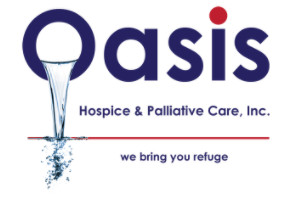Is hospice truly a place where sick people go and never return? Is it true that once a person enters hospice, his or her family will never see him or her again? Isn’t hospice considered a religious practice?
The best hospice care in Chicago, we feel that it is important that these hospice myths are debunked in three words: no, no, and no. The facts are as follows:
- Hospice is not a physical location. Those who choose hospice services near the end of their lives do not “go into” hospice, but rather receive care where they live. This could be a private home, an assisted living facility, or a nursing home. Although some hospitals have hospice beds, the goal of hospice is to provide hospice services to the patient wherever he or she calls home.
- Loved ones and relatives are not barred from helping care for the hospice patient. They are, in fact, a member of the team. Every patient is assigned an interdisciplinary team, which includes the patient, family caregiver, physician, nurse, social worker, chaplain, hospice aid, bereavement specialist, and volunteer. A care plan is developed, which family and loved ones carry out at home to the extent that they are willing and able.
- Hospice is not a last-resort option. When medical treatments are no longer effective in curing a disease, hospice professionals can help terminally ill people and their families by controlling pain, reducing anxiety, providing spiritual and emotional support, and improving quality of life.
- Hospice does not have a religious affiliation. Hospice services include chaplains and other spiritual counselors of all faiths and none. They respect all cultures and points of view and are available to offer support and talk about the patient’s and family’s feelings.
- Hospice care is not limited to cancer patients. Cancer patients, without a doubt, account for a sizable proportion of hospice patients. Anyone suffering from a terminal illness, such as heart disease, COPD, liver disease, kidney failure, stroke, ALS, Alzheimer’s disease, multiple sclerosis, AIDS, or any other life-limiting condition, is eligible for hospice care.
- Hospice care is not prohibitively expensive. During the last six months of life, hospice is usually less expensive than conventional care. Hospice is a comprehensive benefit that is covered by Medicare, Medicaid, Medi-Cal, and the majority of private insurance companies. There are no co-pays under Medicare for doctor visits, nursing care, medications, hospice equipment, or medical supplies related to the patient’s primary illness.
- The patient’s primary care physician is not excluded. A patient’s personal physician has the option of joining the hospice care team. Hospice doctors have extensive training in end-of-life care and will collaborate closely with a patient’s personal physician to ensure the patient’s comfort.
- Hospice does not abstain from medications or treatments. On the contrary, hospice uses cutting-edge medications and palliative treatments to alleviate pain and symptoms and keep patients comfortable.
- The family is not shielded from the hospice patient. Hospice professionals believe that allowing family members, including children, to witness the dying process in a caring environment helps to alleviate their own mortality and the loss of a loved one.
- Hospice care does not imply that anyone has failed the patient. Hospice is a type of medical therapy that may be more appropriate for people with terminal illnesses than curative procedures. Hospice care focuses on symptom management, pain control, and spiritual, emotional, and psychological comfort.
- Hospice isn’t about giving up; it’s about living in comfort and dignity for as long as possible.
- Hospice care does not hasten death. The goal of hospice is not to prolong life or hasten death, but to improve the patient’s quality of life in their final months, weeks, and days. There have been no studies that show hospice can hasten death, but there have been studies that show some patients live longer when they receive hospice services.
- Hospice is not synonymous with euthanasia. Death is an inevitable part of life’s cycle, and hospice neither prolongs nor hastens death. The goal of hospice is to help seriously ill people live in comfort and dignity until they die by providing pain control, symptom management, and spiritual and emotional support. Euthanasia (youth-en-asia) is the intentional killing of a person for the purpose of alleviating suffering. Hospice does not provide it.
- A hospice death differs from a physician-assisted death. A patient’s terminal disease state is allowed to progress to its natural conclusion in hospice. A physician, at the patient’s request, provides the means for the patient to end life early in a physician-assisted death.
- Morphine administered to a hospice patient does not result in premature death. Hospice physicians are specially trained in the use of morphine and only administer the dose required to relieve a patient’s pain or assist them in breathing. Morphine, when used correctly, can help terminally ill patients have a better quality of life at the end of their lives.
At some point during the dying process, hospice may withhold nutrition and/or hydration. When it comes to nutrition and hydration for patients nearing the end of their lives, there are numerous factors to consider. Because the natural progression of a patient’s disease impairs the body’s ability to process foods and fluids, terminally ill patients are expected to eat and drink less and less.
When a patient is unable to eat, a nasogastric tube (a feeding tube that goes through the nose and throat and into the stomach) or a gastrostomy tube (a feeding tube that goes through the abdominal wall and into the stomach) can be placed to provide nutrients. However, these are painful/uncomfortable medical procedures with the possibility of complications such as infections, electrolyte and mineral imbalances, vomiting, and diarrhea.
Artificial nutrition and hydration usually do not make the hospice patient feel better, stronger, or live longer. The majority of dying patients do not experience hunger. Those who do experience hunger are satisfied with small amounts that are made available upon request. ¹ Hospice physicians are specially trained to recognize when artificial nutrition and hydration support are necessary.
Humans have expressed their love for one another through the act of feeding and sharing meals since time immemorial. Much of the anxiety surrounding decisions to begin, withhold or discontinue artificial nutrition and hydration stems from the mistaken belief that administering artificial nutrition and hydration is equivalent to the nurturing acts of feeding our babies or serving a meal to our family.
To schedule your free in-home assessment, get in touch with Oasis at (708) 564 4838 today!

